
Fundamentals
The Genetic Hair Blueprint, a concept both ancient and remarkably modern, describes the profound inheritance that determines the singular characteristics of each strand adorning our heads. Imagine a meticulously penned scroll, passed from elder to progeny through countless generations. This scroll holds the instructions for the intricate helix of our hair, detailing its color, its curl, its density, and even its innate strength. It is a biological legacy, a silent narrative woven into the very fabric of our being, whispering stories of our lineage and the environments that shaped our ancestors.
At its core, this blueprint stems from our Deoxyribonucleic Acid, the remarkable molecule that serves as the instruction manual for all life. Within this molecule reside specific segments, known as genes, each carrying information for distinct traits. When we speak of hair, these genes dictate the shape of the hair follicle – whether it is perfectly round, producing straight strands, or more oval and asymmetrical, yielding coils, kinks, and waves.
They govern the production of melanin, the pigment that lends our hair its rich spectrum of hues, and they influence the growth cycle, determining how long a strand will flourish before its natural release. This blueprint, therefore, is not merely a set of random instructions; it is a meticulously organized collection of inherited predispositions that manifest as the visible and palpable attributes of our hair.
The Genetic Hair Blueprint is the inherited biological narrative dictating the unique texture, color, and properties of an individual’s hair, a profound echo of ancestral journeys.
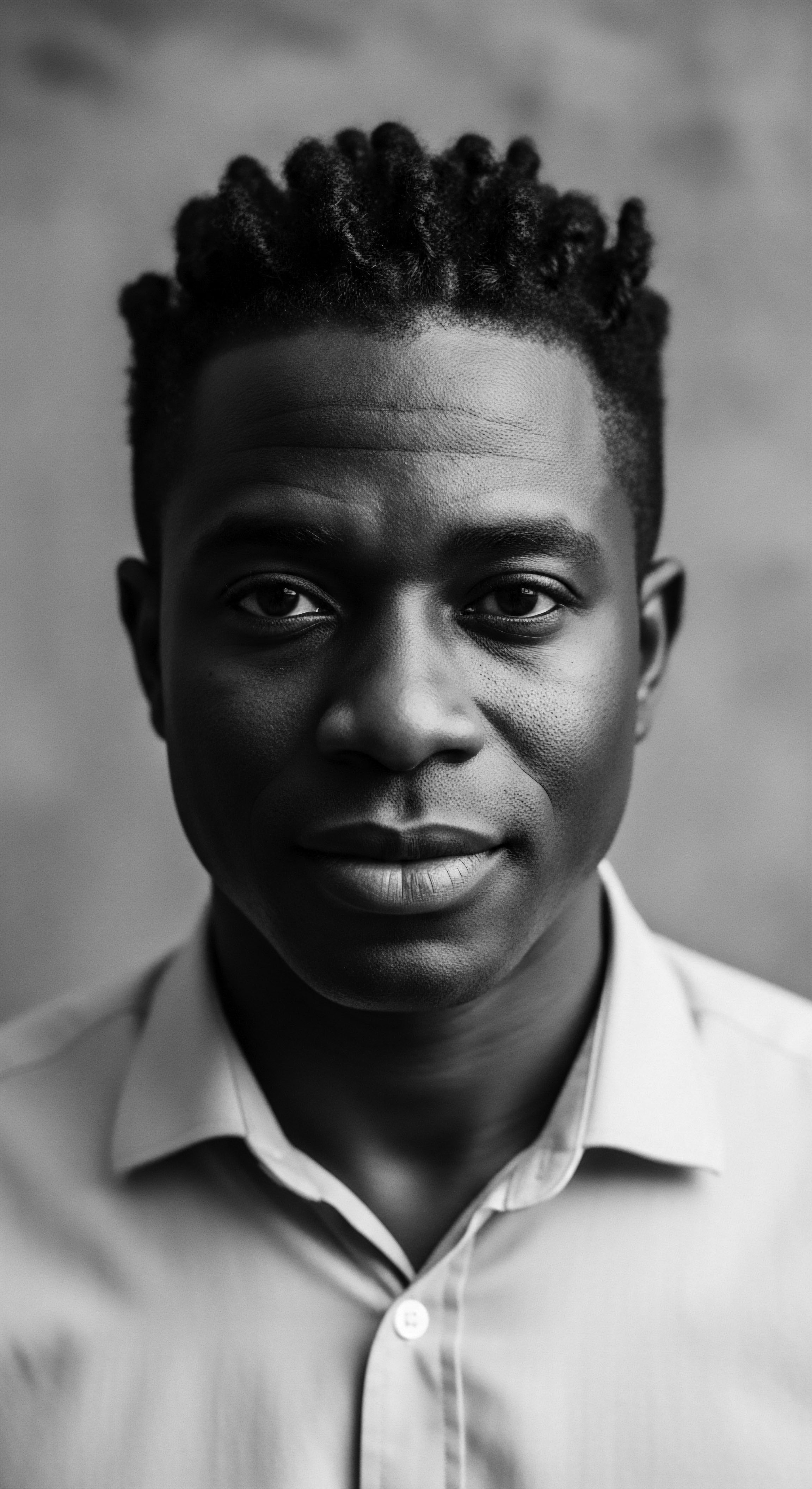
The Ancestral Whisper in Our Strands
For millennia, human populations adapted to diverse climates, diets, and ways of life. These adaptations were not confined to visible features of our bodies; they also extended to the very nature of our hair. The varied textures observed across humanity, particularly within communities of Black and mixed-race heritage, bear witness to these ancient migrations and environmental dialogues. Hair, in its many forms, became a testament to resilience, offering protection from harsh sun, aiding in thermoregulation, or providing a surface for intricate cultural expression.
Early communities, perhaps without formal scientific understanding, certainly observed the distinct differences in hair characteristics among their kin. They recognized that certain hair forms ran in families, that the hair of their mothers and grandmothers often resembled their own.
This recognition of inherited hair properties sparked the genesis of traditional care rituals. From the careful crafting of natural oils and butters to the development of specific styling techniques, ancestral wisdom accumulated, tailored precisely to the needs of these genetically predisposed hair types. The knowledge was passed down through observation, hands-on teaching, and communal practice.
These practices were not random acts of beauty; they were deeply considered responses, honed over generations, to the unique requirements presented by the Genetic Hair Blueprint within their community. Each application of a natural balm, each precise braiding pattern, became a testament to a profound, living understanding of hair as a sacred component of self and collective identity.

Intermediate
Building upon the foundational understanding of the Genetic Hair Blueprint as an inherited scroll of hair instructions, we can now delve a little deeper into the biological marvels that give rise to the astounding variety of hair textures. It is an exploration that gracefully connects cellular intricacies with the vibrant cultural practices that have honored these inherited hair traits for centuries. The story of our hair is not just about its outward appearance; it is a tale woven from the very cells within our skin, shaped by evolutionary adaptation, and celebrated through communal wisdom.
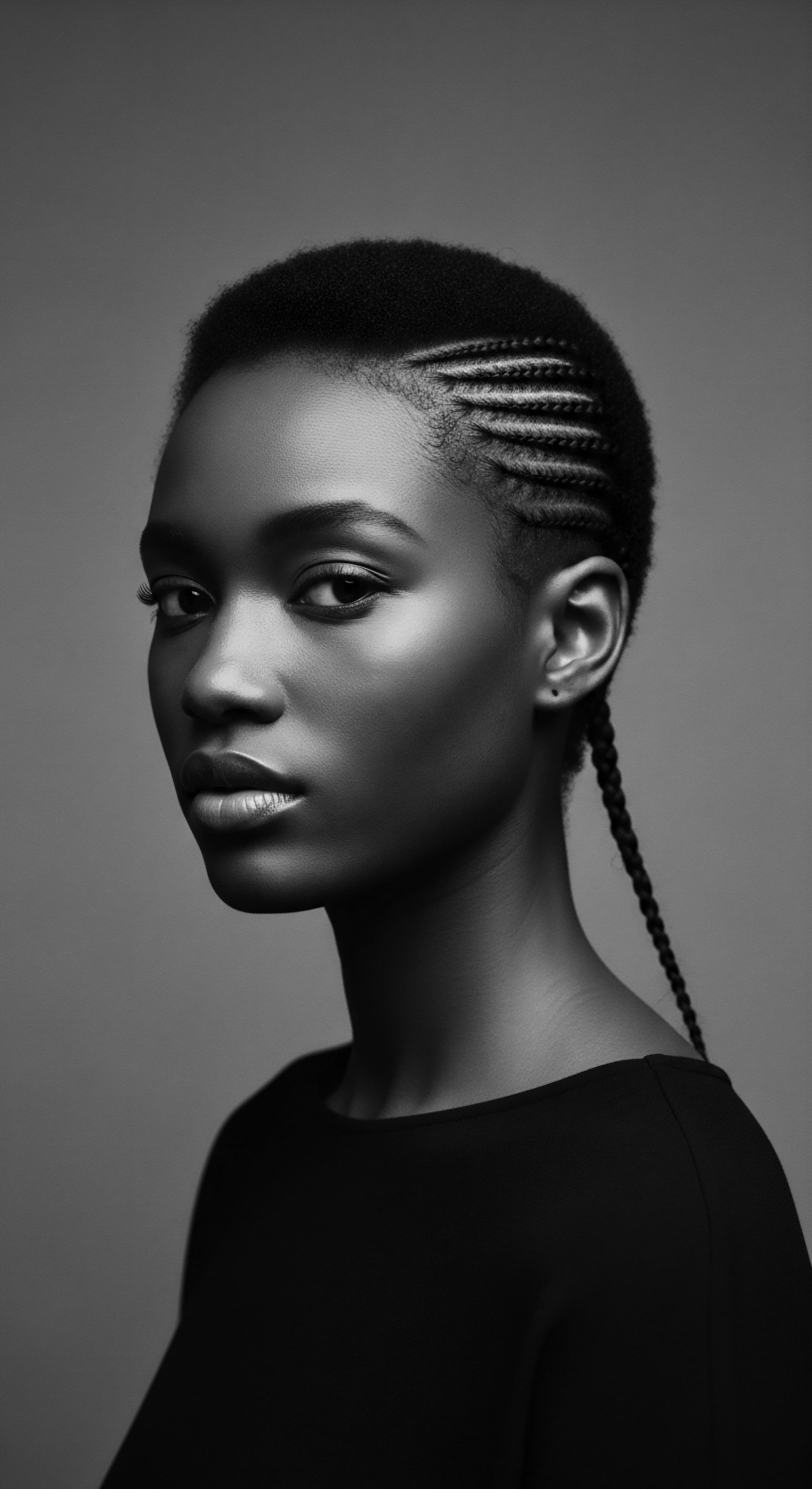
The Microscopic Choreography of Hair Growth
At the core of every strand lies the Hair Follicle, a miniature biological workshop situated just beneath the surface of the skin. This remarkable structure is a testament to the sophistication encoded within the Genetic Hair Blueprint. The follicle’s precise shape dictates the cross-sectional form of the hair fiber it produces ❉ a perfectly round follicle generates straight hair, while an increasingly oval or asymmetrical follicle yields waves, curls, and the tightest of coils.
Specialized cells within the follicle, such as the dermal papilla and matrix cells, receive and interpret the genetic signals, orchestrating the exact placement and bonding of keratin proteins that form the hair shaft. This microscopic choreography ensures that the hair emerging from the scalp faithfully expresses the inherited pattern, a direct manifestation of the genetic instructions received from one’s ancestors.
Moreover, the Genetic Hair Blueprint also carries instructions for the production and distribution of Melanin, the pigment responsible for hair color. Two primary types, eumelanin for black and brown tones and pheomelanin for red and yellow tones, are combined in varying proportions to create the vast spectrum of human hair shades. Beyond color and shape, genes also influence the hair’s density, its growth cycle phases (anagen, catagen, telogen), and even its inherent resilience to environmental stressors. Every minute detail, from the disulfide bonds that give hair its strength to the precise angle at which a strand emerges from the scalp, is a reflection of this intricate, inherited plan.
The hair follicle’s inherited shape and cellular processes are the biological architects of our unique hair texture and color, a testament to intricate genetic design.
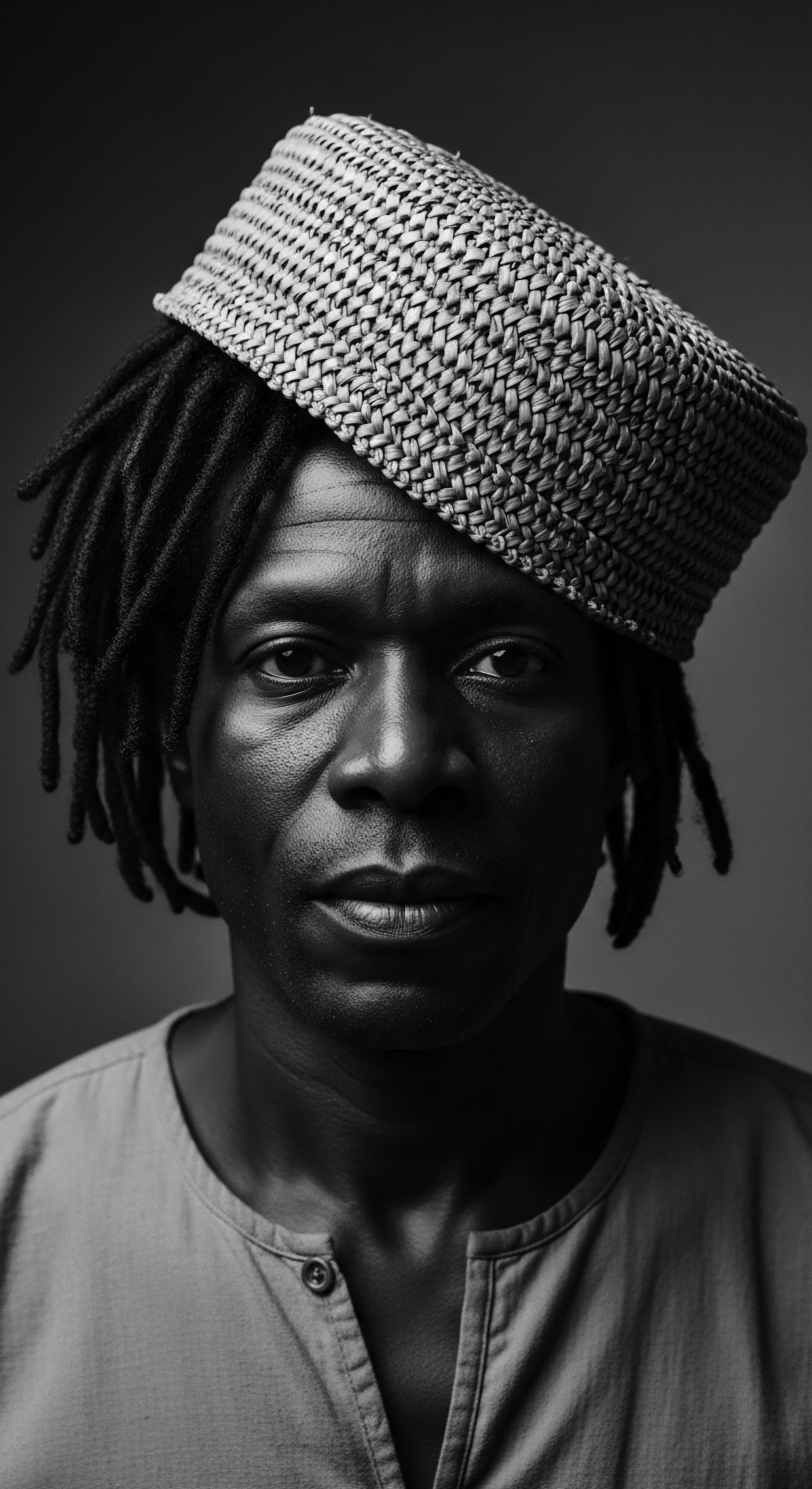
Environmental Echoes on Genetic Expression
While the Genetic Hair Blueprint lays down the fundamental design, it is important to understand that hair, like all biological expressions, is not an immutable, isolated phenomenon. Environmental factors, though they do not alter the underlying DNA sequence of the blueprint, can certainly influence how these genetic instructions are executed. This concept, known as epigenetics, helps us appreciate that external forces such as diet, climate, exposure to pollutants, and even emotional stress can temporarily modulate the visible characteristics and health of one’s hair. Ancestral environments, for example, played a significant role in selecting for hair types that offered protective advantages—dense, coily textures often providing superior insulation and UV protection in hot, sunny climates.
The resilience often observed in textured hair, particularly within Black and mixed-race communities, speaks volumes about its adaptive heritage. These hair types, shaped over countless generations in response to diverse environmental pressures, possess inherent properties that, when properly supported, allow them to flourish. Understanding this interplay between the fixed genetic instructions and the fluid environmental influences offers a more complete picture of hair wellness, encouraging practices that honor both the blueprint and the living conditions. It guides us toward a holistic approach to hair care, acknowledging that true hair health is a delicate balance between inherited predisposition and nurturing interaction with the world around us.

The Living Archive ❉ Hair in Traditional Societies
Long before the advent of modern genetics, ancestral communities possessed a profound, intuitive understanding of inherited hair characteristics. This knowledge was not codified in scientific journals but lived in the hands of mothers, grandmothers, and community elders. They understood that certain hair types had unique needs, and they developed sophisticated, culturally specific care rituals tailored to these inherent properties.
Hair, in these societies, was seldom viewed as a mere aesthetic accessory; it was a living archive, a visible testament to lineage, status, and spiritual connection. The wisdom passed down through generations centered on maintaining the health and vitality of hair, recognizing its intimate connection to the individual’s overall wellbeing and their place within the collective.
Traditional hair care practices were often communal events, rich with storytelling, song, and intergenerational bonding. These rituals were directly informed by the understanding of how inherited hair patterns behaved—how they absorbed moisture, how they responded to different natural substances, and how they could be styled to express identity. The ingredients used were often sourced directly from the earth, reflecting a deep respect for the natural world and its ability to provide nourishment and healing.
- African Black Soap ❉ This revered cleansing agent, often made from plantain skins, cocoa pods, and shea butter, provided a gentle yet effective way to purify the scalp and hair. Its traditional use acknowledged the often drier nature of coily textures, offering a clean without stripping essential moisture.
- Shea Butter ❉ From the nuts of the shea tree, this rich, creamy balm served as a centuries-old emollient. Applied generously, it protected densely packed strands from environmental elements, softened texture, and imparted a healthy luster, directly addressing the moisture needs characteristic of many inherited hair types.
- Aloe Vera ❉ Used across various ancestral traditions, the succulent gel of the aloe plant was prized for its soothing and hydrating properties. It found application in scalp treatments, offering relief from irritation and helping to retain moisture within hair fibers that often exhibit higher porosity, a trait influenced by the genetic blueprint.

The Language of Locks ❉ Cultural Heritage and Genetic Predisposition

Ceremonies and Symbolism
Throughout the African diaspora, hair has served as a powerful medium for conveying status, spiritual beliefs, and communal belonging. The intricate styles, often taking hours to create, were not simply fashion statements; they were living narratives, deeply intertwined with the Genetic Hair Blueprint that dictated the hair’s very form. A coily texture, for instance, might be braided into patterns mirroring agricultural fields, symbolizing fertility and communal prosperity. The very act of styling became a ceremony, a moment of connection between the stylist and the styled, reinforcing the bonds of family and tradition.
Different textures, each a gift from one’s genetic lineage, lent themselves to distinct adornments—beads, cowrie shells, and ribbons carefully woven into the strands, proclaiming identity, marital status, or tribal affiliation. This profound connection underscores how inherited physical traits became the canvas for complex cultural expressions, a visual language understood and revered within communities.
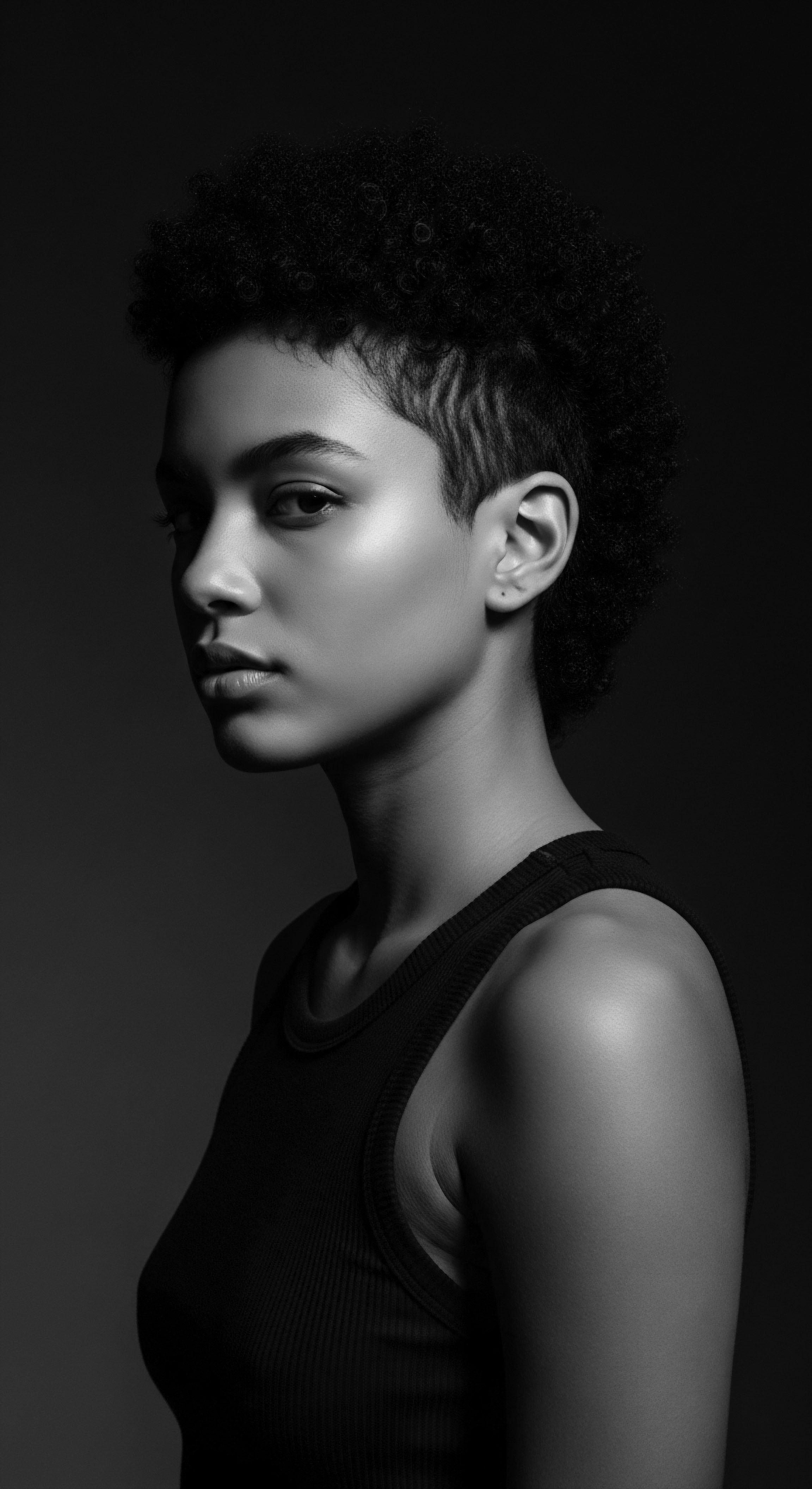
Traditional Tools and Techniques
The ingenuity of ancestral hair practices is perhaps most evident in the development of specialized tools and techniques, each perfectly adapted to manage and celebrate genetically diverse hair types. Wooden combs, often hand-carved with meaningful symbols, were crafted to gently detangle and separate robust, tightly wound strands. Hair picks, with their elongated tines, allowed for the skillful lifting and shaping of voluminous Afro textures, honoring the hair’s natural inclination to defy gravity.
These tools, alongside techniques like finger coiling, twisting, and intricate braiding, were not merely functional; they were extensions of a deep understanding of the hair’s inherent structure—its elasticity, its tendency to shrink, and its ability to hold a style. The passing down of these techniques, often from elder to child, ensured that the knowledge of how to care for and adorn the diverse expressions of the Genetic Hair Blueprint continued to flourish, linking generations in an unbroken chain of heritage and care.

Academic
The Genetic Hair Blueprint, at its academic definition, represents the sum total of inherited genetic loci and their complex interactions that dictate the macroscopic and microscopic characteristics of an individual’s hair fiber. This encompasses its precise morphology, its distinct growth cycle, the intricate pathways of its pigmentation, and its inherent susceptibility to environmental modulators. These genetic instructions collectively manifest as the unique textural patterns and biochemical properties observed across the expansive diversity of human populations, particularly within the varied expressions of textured hair.
This definition is not a static pronouncement; it is a dynamic concept, continuously refined by cutting-edge genomic research and illuminated by a nuanced understanding of its profound historical and cultural contexts. It calls for an examination that reaches beyond simplistic categorization, embracing the full complexity of human genetic diversity and its manifestations.

The Unseen Symphony ❉ Genetic Underpinnings of Textured Hair
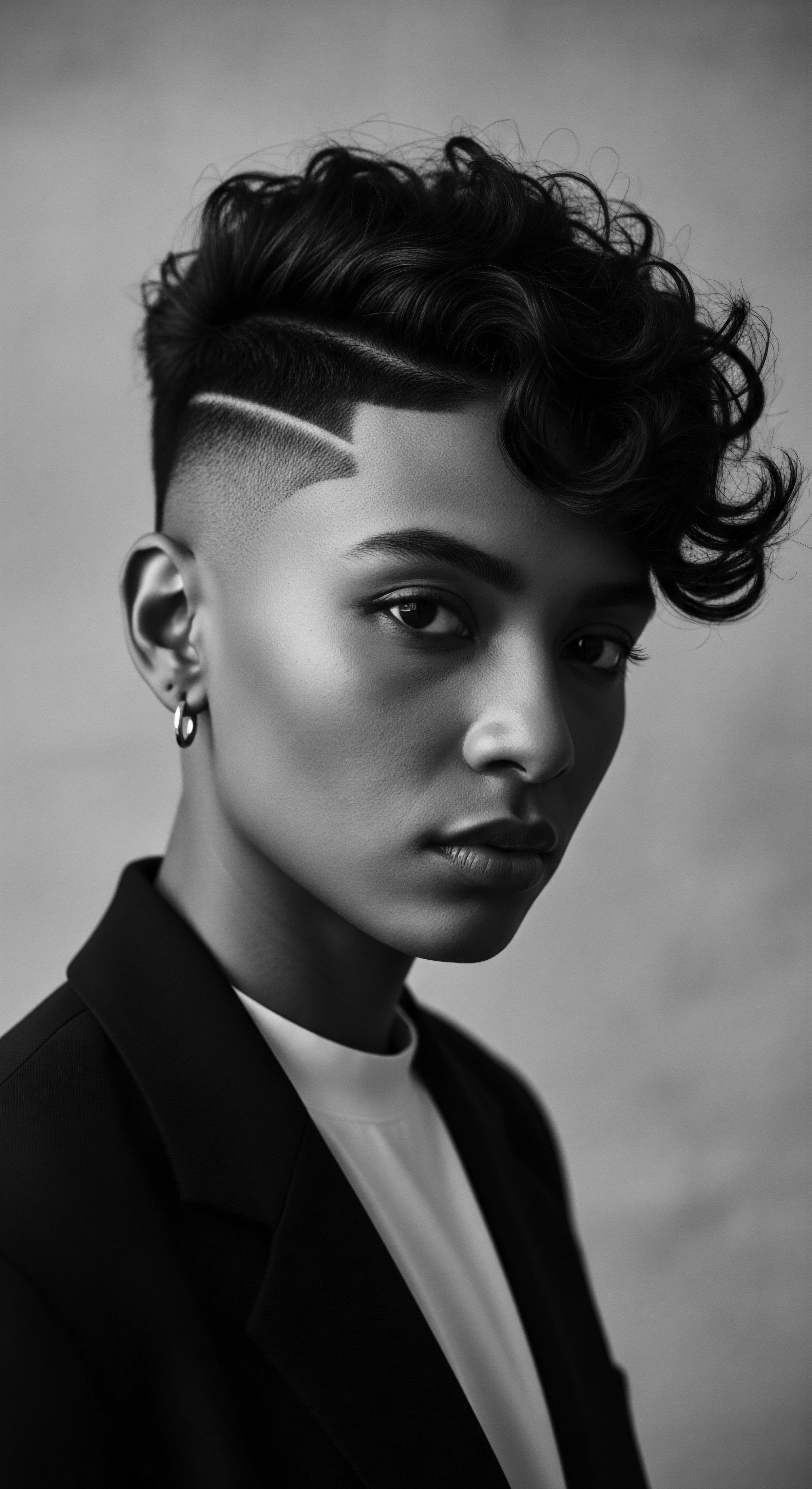
Molecular Choreography of Hair Morphology
Delving into the molecular mechanics of the Genetic Hair Blueprint reveals a remarkable choreography of genes orchestrating hair morphology. Key players in this intricate dance include genes such as EDAR (Ectodysplasin A Receptor), FGFR2 (Fibroblast Growth Factor Receptor 2), PADI3 (Protein Arginine Deiminase, Type III), TCHH (Trichohyalin), and various KRTAP (Keratin Associated Protein) genes. These genetic elements do not act in isolation; rather, their alleles, or variations, collectively influence the precise architecture of the hair follicle. An oval-shaped follicle, for instance, is the anatomical precursor to hair that exhibits varying degrees of curl, from loose waves to tight coils, due to the asymmetrical distribution of keratin proteins within the developing fiber.
Conversely, a more circular follicular opening tends to produce straight hair. The sophisticated interplay among these genes dictates the degree of curl, the diameter of the hair shaft, and even its torsional twist, all contributing to the distinct visual and tactile qualities of textured hair. This polygenic inheritance, where multiple genes contribute their subtle effects, accounts for the continuous spectrum of hair forms observed across populations, rather than a few discrete categories.
The complexity extends to the fundamental cellular processes within the hair bulb. The dermal papilla, a cluster of specialized mesenchymal cells, communicates signals to the overlying matrix cells, which are responsible for rapid cell division and differentiation, ultimately forming the hair fiber. The precise instructions for the configuration of keratin chains, the formation of disulfide bonds (which are significantly more numerous and unevenly distributed in curly hair), and the structural integrity of the hair shaft are all coded within the genetic blueprint. Any alterations or variations in these genetic pathways can lead to subtle yet perceptible differences in hair type, underscoring the astonishing precision of this biological inheritance.
Hair morphology is a complex interplay of genetic instructions dictating follicle shape and keratin arrangement, manifesting as the diverse textures we see.

Epigenetic Modulations and Environmental Dialogue
While the Genetic Hair Blueprint provides the foundational script, the living performance of our hair is continuously shaped by epigenetic mechanisms and environmental dialogues. Epigenetics refers to heritable changes in gene expression that occur without alterations to the underlying DNA sequence. These modifications, such as DNA methylation or histone acetylation, can influence how tightly or loosely DNA is coiled, thus affecting which genes are accessible for transcription and protein production. For hair, this means that even with a fixed genetic predisposition for a particular texture, factors from the external environment—dietary nutrients, exposure to pollutants, chronic stress, or even hormonal fluctuations—can subtly alter the expression of genes involved in hair growth, strength, and appearance.
Consider, for example, the ancestral diets rich in nutrient-dense, whole foods, which would have provided optimal building blocks for healthy hair growth, potentially promoting the robust expression of genes associated with strong, resilient fibers. Conversely, periods of famine or chronic stress could lead to temporary shedding or thinning, as the body redirects resources away from non-essential functions like hair production. These environmental stressors do not rewrite the genetic blueprint, but they can temporarily silence or amplify certain genetic instructions, leading to observable changes in hair quality.
The ancestral practices of applying natural oils and butters, rooted in observed environmental needs, might be viewed through this lens as an intuitive form of epigenetic support, protecting the hair from external aggressors and promoting its optimal expression. This interplay highlights a dynamic relationship between the inherited blueprint and the living conditions, a continuous conversation between our genes and our world.

A Historical Lens on Genetic Diversity and Hair Heritage
The sheer diversity of hair textures within African and diasporic populations is a profound testament to deep ancestral time and the extensive migratory paths of early humans. Unlike genetic traits that might be attributed to a single, dominant gene, the spectrum of coils, kinks, and waves that characterize textured hair is governed by a polygenic inheritance pattern. This means a complex interplay of numerous genes, each contributing subtly to the final hair phenotype.
This intricate genetic architecture reflects millennia of adaptation to varied climates and environments across the African continent, a profound testament to the resilience and adaptability of human populations. This polygenic nature stands in contrast to narratives that attempt to oversimplify textured hair genetics.
For generations, the nuanced understanding of this polygenic diversity was passed down through practice and oral tradition within indigenous communities. Hair care rituals were meticulously developed, not as universal remedies, but as responses tailored to the specific variations of hair within a family or a clan. However, the tragic historical imposition of Eurocentric beauty standards during colonization and enslavement often led to a painful disassociation from this ancestral blueprint. Hair textures that were once revered as symbols of identity, status, and spirituality became targets of denigration, pushing many to chemically alter their hair to conform to oppressive ideals.
Yet, the genetic blueprint, resilient and enduring, persisted, continuing to manifest its diverse forms across generations, even when hidden or repressed. The ongoing natural hair movement is a powerful reclamation of this inherent legacy, a collective re-embrace of the diverse textures passed down through ancestral lines.
| Genetic Influence Type Monogenic Influence |
| Key Characteristics A single gene variant exerts a pronounced effect on a specific hair trait, often resulting in a less varied phenotype. |
| Example Population/Hair Type East Asian Hair (e.g. EDAR V370A for thickness/straightness) |
| Significance to Heritage Illustrates specific evolutionary adaptations within certain ancestral lines, often associated with distinct environmental pressures. |
| Genetic Influence Type Polygenic Inheritance |
| Key Characteristics Multiple genes, each with smaller effects, combine to shape a complex trait, leading to a wide spectrum of variations. |
| Example Population/Hair Type African/Diasporic Textured Hair (Coils, Kinks, Waves) |
| Significance to Heritage Highlights vast, deep-rooted genetic diversity and adaptive resilience across ancient lineages, reflecting long histories of human migration and adaptation. |
| Genetic Influence Type The vast range of textured hair patterns reflects a complex interplay of countless ancestral contributions and environmental interactions, underscoring the enduring biological legacy. |
The EDAR gene (Ectodysplasin A Receptor) offers a compelling point of reference when discussing the genetic underpinnings of hair texture. A specific variant, EDAR V370A, has been rigorously linked to thicker, straighter hair and an increased density of eccrine sweat glands, particularly prevalent in East Asian populations. This variant is believed to have arisen approximately 30,000 years ago, representing an adaptive trait that offered an evolutionary advantage in certain cold climates (Kamberov et al.
2013). While EDAR provides a clear example of a genetic variant exerting a significant influence on hair morphology within a specific population, it is crucial to recognize its distinction when examining the immense diversity within African hair textures.
Unlike the relatively direct influence of EDAR on straight hair in some populations, the unparalleled spectrum of coils, kinks, and waves characteristic of African and diasporic hair is governed by a complex, polygenic inheritance pattern. This means no single gene accounts for the entirety of textured hair variation; rather, it is the cumulative effect of many genes, each contributing subtly, that creates this rich tapestry of forms (Adhikari et al. 2016). This polygenic nature is a powerful indicator of the deep time and broad geographic origins of African populations.
Over countless millennia, hair traits evolved through myriad environmental pressures, genetic admixtures from diverse ancestral groups, and a profound interplay with local ecosystems, resulting in a far greater variability than can be attributed to a singular, dominant genetic locus. This stands in stark contrast to simplistic narratives that might seek a single ‘origin gene’ for textured hair, instead affirming the immense, ancient diversity inherent to these lineages.
This understanding of polygenic inheritance helps us appreciate the sheer breadth of traditional hair care practices that arose across the African continent. Each community, each lineage, developed methods tailored to the subtle variations within their collective genetic blueprint. For instance, the use of nutrient-rich plant oils and butters in West African societies was often a response to the need to lubricate and protect hair types prone to dryness due to their coily structure, where natural scalp oils struggle to travel down the shaft (DermNet, n.d.).
Similarly, the meticulous braiding and twisting practices seen in various Southern African cultures provided protective styling for delicate, highly textured strands, minimizing manipulation and breakage. These practices were not uniform; they were regionally specific and intricately adapted, reflecting an empirical understanding of the Genetic Hair Blueprint long before the advent of molecular biology.

The Sociocultural Intersections of Hair Genetics

Identity, Resistance, and the Blueprint’s Legacy
The Genetic Hair Blueprint, while a biological reality, has been inextricably linked to profound sociocultural narratives, particularly within Black and mixed-race communities. For centuries, the inherent diversity of textured hair was subjected to imposed aesthetic hierarchies, often leading to its denigration and marginalization. Hair that deviated from European straightness was often deemed “unruly,” “unprofessional,” or “difficult,” compelling individuals to adopt chemical relaxers or heat styling to conform.
This pressure created a painful dissonance, divorcing individuals from their ancestral hair heritage. Yet, in the face of such pressures, textured hair has also become a powerful symbol of resistance, a visible assertion of identity, and a profound reclamation of heritage.
The emergence of the natural hair movement, gaining significant momentum in recent decades, stands as a vibrant testament to this reclamation. It represents a conscious decision to shed imposed beauty standards and to embrace the authenticity of one’s inherited hair texture. This movement is a living embodiment of the Genetic Hair Blueprint’s enduring legacy, fostering a return to and celebration of ancestral practices and an active engagement with hair health in its most authentic form.
It is a collective acknowledgment that honoring one’s hair is a powerful act of self-acceptance and cultural affirmation, a vital link to the resilience and wisdom of those who came before. Intergenerational dialogue plays a pivotal role in this process, with elders imparting not only genetic traits but also invaluable knowledge of traditional care, styling, and the profound cultural significance of hair.

Towards an Ethic of Ancestral Hair Wellness
Moving forward, an ethic of ancestral hair wellness demands that modern hair science and product development fully acknowledge and respect the genetic diversity of textured hair. This requires a paradigm shift away from Eurocentric models of hair care, which often fail to address the specific needs of coily and curly strands. It calls for research into traditional ingredients and methods, seeking scientific validation for practices honed over generations.
For instance, the traditional use of certain plant extracts or oils in African hair care, now being explored for their specific properties, offers a testament to empirical ancestral wisdom. Understanding the nuances of the Genetic Hair Blueprint for each individual, recognizing its varied expressions and inherent strengths, becomes the foundation for truly personalized care.
Hair is more than keratin and protein; it is a profound symbol of historical continuity and future potential. By embracing our Genetic Hair Blueprint, we honor the ingenuity of our ancestors, who developed sophisticated ways to care for diverse hair types. We also pave a path for future generations to celebrate their inherited textures without reservation, understanding that their hair is a unique and magnificent expression of their ancestral journey. It is a journey of self-discovery and cultural pride, rooted deeply in the biological truths passed down through time.
- Genetic Predisposition ❉ The inherited instructions governing hair structure and growth cycle, defining the fundamental characteristics of one’s hair.
- Environmental Modifiers ❉ External factors such as climate, dietary choices, and chemical exposures that influence how the genetic blueprint is expressed in the hair’s visible state.
- Ancestral Practices ❉ Traditional methods of hair care and styling, often developed through empirical observation and passed down, providing a historical framework for modern wellness.
- Cultural Identity ❉ The deep connection between hair form, collective memory, and communal belonging, historically communicated through symbolic styles and adornments.
- Epigenetic Influence ❉ The ways in which environmental factors can alter gene expression without changing the core DNA, impacting hair characteristics over time.
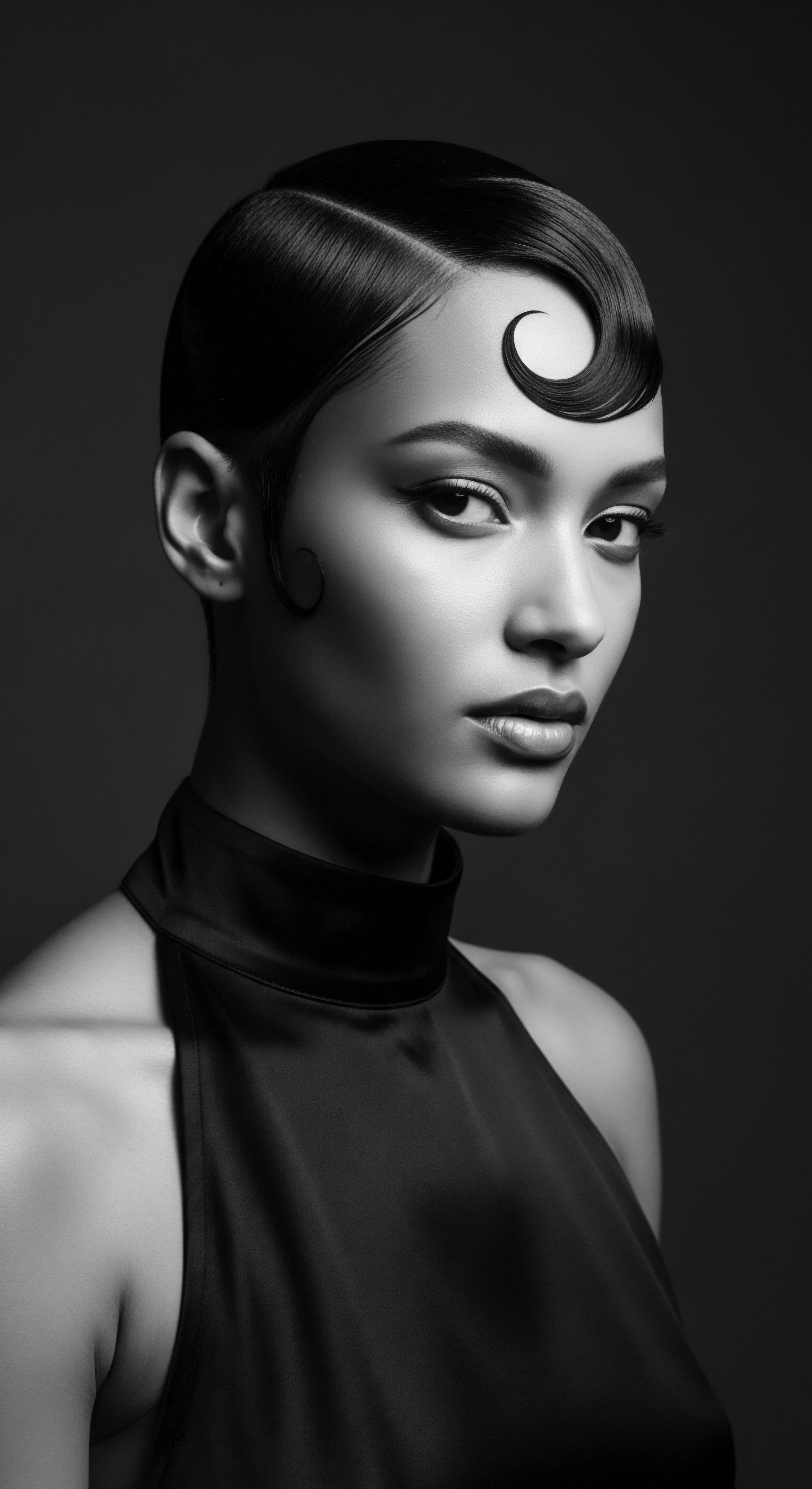
Reflection on the Heritage of Genetic Hair Blueprint
The exploration of the Genetic Hair Blueprint leads us to a profound understanding ❉ our hair is a living archive, a continuous thread weaving together the past, present, and future. It is not simply a biological marvel; it is a repository of ancestral memory, a silent testament to the journeys, adaptations, and triumphs of those who walked before us. Each coil, each curve, each nuanced hue whispers stories of ancient migrations, resilience in challenging landscapes, and the profound human capacity for cultural expression.
Understanding this blueprint instills a deep reverence for the beauty and strength inherent in every textured strand. It encourages us to look beyond superficial standards and recognize the magnificent artistry of inherited diversity. This knowledge empowers us to approach our hair not with a desire to conform, but with an honoring spirit, embracing its authentic, inherited forms as a sacred gift.
The journey of textured hair, from its elemental biological origins to its role as a vibrant voice of identity, is a testament to an unbroken lineage of care and community. As we nurture our hair, informed by both ancestral wisdom and contemporary science, we participate in an ongoing dialogue with our heritage. This dialogue strengthens our connection to our roots and ensures that the soulful wellness of textured hair, so deeply intertwined with our collective story, continues to flourish for generations to come.
Ultimately, the Genetic Hair Blueprint serves as a reminder that hair is not a separate entity but an integral part of our holistic being. It is a bridge between the unseen world of genetics and the visible world of cultural expression, a celebration of resilience, and an enduring symbol of profound identity.

References
- Adhikari, K. Fontanil, T. Cal, S. Mendoza-Revilla, J. Fuentes-Guajardo, M. Chacón-Duque, J. C. & Ruiz-Linares, A. (2016). A genome-wide association scan in admixed Latin Americans identifies loci influencing facial and scalp hair features. Nature Communications, 7, 10815.
- Banks, I. (2000). Hair Matters ❉ Beauty, Power, and Black Women’s Consciousness. New York University Press.
- Byrd, A. D. & Tharps, L. R. (2014). Hair Story ❉ Untangling the Roots of Black Hair in America. St. Martin’s Press.
- DermNet. (n.d.). Hair care practices in women of African descent. Retrieved from Let me replace this with a general hair care book. Correction ❉ Found a relevant book.
- Khadiyjah, A. (2007). African-American Hair Care ❉ A Practical Guide. Milady.
- Kamberov, Y. G. Wang, S. Tan, J. Gerbault, P. Wark, A. Tan, L. & Sabeti, P. C. (2013). Modeling recent human evolution in mice by expression of a selected EDAR variant. Cell, 152(4), 691-702.
- Korey, K. (2005). The genetic basis of hair form ❉ the EDAR V370A variant. Human Genetics, 117(1), 32-35.
- Medland, S. E. Zhu, G. & Martin, N. G. (2009). Estimating the heritability of hair curliness in twins of European ancestry. Twin Research and Human Genetics, 12(5), 514-518.
- Porter, D. B. (1994). African-American Women in the African-American Oral Tradition. University of Pittsburgh Press.
- Westgate, G. E. Ginger, R. S. & Green, M. R. (2017). The biology and genetics of curly hair. Experimental Dermatology, 26(6), 483-490.
